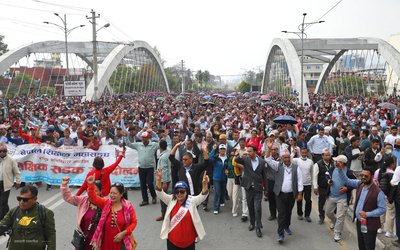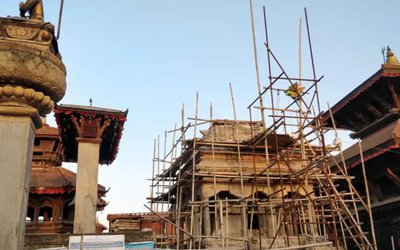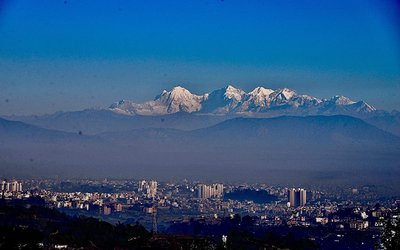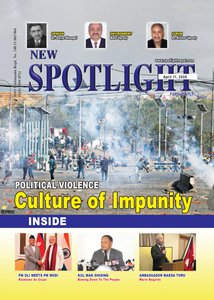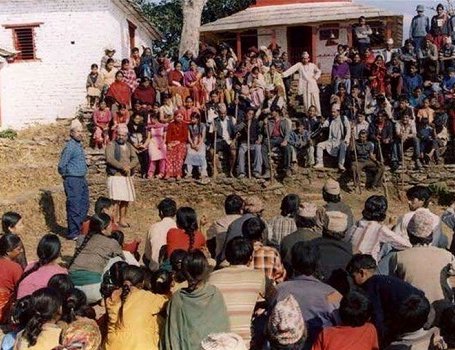
The half-baked notion of federalism proved fatal to the late Constituent Assembly and is giving all national political parties painful indigestion with no end in sight to their agony. Its impact on the Dalit community, which (depending on how one counts) could be almost one in every five Nepali, has the added misery of hindsight, the realization that federalism could well be a huge political fraud. Dalit voice is still marginal in New Nepal and no milestone event such as the Madhesi Gaur massacre or east and west Nepal closures by other ethnic groups brings home their plight to national attention. When the commission formed to recommend a federal structure fractured and proposed a “virtual” federation for them that would have no geographic ground reality, the federal debate was exposed for its fake inclusiveness.
In recent public discussions at the Social Science Baha and at the International Commission for Dalit Rights, Prof. Steven Folmar of Wake Forest University argued clearly that Dalits cannot organize around any of the current political debating points that characterize federalism: they are ethnically the same as their high caste neighbours, speak the same language and are members of the same religion, unlike Janjatis, Madhesis or Muslims who can organize along those distinct fault lines. Their plight, however, is far worse, more chronic and entrenched, because even Janjatis and Madhesis practice virulent untouchability against Dalits in their vicinity.
For those concerned with social justice, there is one more reason to be worried about it: because of the politics of hate and ethnic confrontation promoted by the federal debate, there is a distinct backsliding with Dalit rights since 2006. Village Dalits report that high castes and Janjatis who had accepted their participation in public functions since the Panchayat reforms of 1962 have begun to withdraw: ecumenism is losing ground to communalism. When pressed to name the most important index of caste freedom that a righteous government of Nepal might implement, Prof. Folmar reluctantly (natural for an anthropologist) cited two: land ownership and hate-related violence against Dalits. While we have seen some improvement in land ownership and professional upward mobility (thanks mainly to unplanned consequences of remittances and urbanization, especially the anonymity and jobs provided by the latter), violent discrimination, especially when it comes to water access, shows a disturbing re-emergence.
It is worth reflecting on this chronic problem and how Nepali society may move towards its eradication. Any South Asian Hindu who visits the Hindu enclave of Bali in Indonesia cannot but be struck by the Hinduism practiced there: there is caste but no untouchability, and the majority have no problem stating that they are Shudra but will readily recite the Gayatri mantra, something forbidden in South Asia. In South Asia, the great leap backward with Varna (meant to be individual psychological tendencies indicating proclivities or affinity for particular actions and hence profession) sliding to Chhuwachhut (untouchability) and Jaat (birth-determined) accelerated with the violent Gaznavite invasion of the 11th Century and what followed. Tantrick Hinduism and Buddhism, certainly more experimental and egalitarian than their Shivite or Vaishnavite non-monastic counterparts, took a backseat after the destruction of Nalanda University and the fleeing of its professors to Tibet.
Nepal felt the impact two centuries later with the Muslim conquest of Simraungarh and the takeover of more egalitarian Lichhavi Kathmandu by its fleeing Carnatic mercenaries who set up the Malla dynasty that brought in more caste-ridden features. With Bengali Sultan Shamshuddin’s marauding loot of Kathmandu and the desecration of Pashupati temple among others, the restoration was religiously more inward-looking, conservative and afraid of outside engagement. It is interesting to note that remnants of Tantrik egalitarianism can still be seen in Kathmandu Valley’s Ashtamatrika and Dasmahavidya temples whose priests are Dalits.
In more modern times, it was Jung Bahadur's regressive Mulki Ain of 1852 enacted after his landmark trip to England that introduced legally draconian punishments for infringing caste rules. It proved that either he understood nothing of the challenges wrought by industrial capitalism well on its way to conquering the globe, or that he understood it too well and decided to surrender to it externally while keeping a more regressive grip internally. It also continued the earlier practice of enslaving the conquered, the Mallas having forced the Lichhavis to menial jobs, and the Rana clan then forcing the whole linguistic group of highly diverse and fractured Newars with their own high and low castes onto a lower status. Shukra Raj Shastri, one of our four original martyrs, was hanged by the Ranas, less for his anti-Rana activities and more for being a reformist Arya Samajist. (If one reads what would now be called Sukra Raj’s PhD thesis on the Vedanta written in Varanasi, one is struck by his hagiographic praise of Juddha Sumshere in his preface for the reforms and industrialization initiated by the Rana autocrat, who subsequently hanged him a few years later!).
It will sound sacrilegious to say so in these “politically correct” Loktantrick times, but it took the Panchayat and King Mahendra's reform of the Mulki Ain in 1962 to get rid of Jung Bahadur's draconican anti-Dalit laws. And it is also worth recalling that a Hira Lal Bishwakarma enjoyed more de facto powers in the Panchayat than any Dalit leader subsequently that were often promoted by parties for tokenism. Ironic indeed it is, but the town of Hetauda would not be enjoying its drinking water system today but for this Dalit minister who on-the-spot forced the all-powerful Forest Ministry to de-notify forested land above the town for this purpose. Some three years after Mahendra’s Mulki Ain reforms, the Royal Nepal Army formally abolished the position of bhanchhe, a Brahmin cook, and introduced rotational cooking duties by all castes. These reforms have done more in substance to remove the scourge of untouchability than all of the grandstanding verbosity of self-styled radical revolutionaries of Loktantra since then.
Party-beholden intellectuals today like to argue that these Panchayat reforms did not go far enough, that it did not criminalize untouchability. They might like to watch Steven Spielberg's acclaimed movie Lincoln, especially a Mahabharatesque moment therein when Thaddeus Stevens, the Republican abolitionist leader of the US Congress leading the fight for the 13th Amendment to the US constitution has to moderate his previous position of absolute racial equality and to argue that the proposed amendment only meant “all men are equal before the law”. Had that bit of pragmatic “regression” in a perfectly democratic polity not been done, the US might not have remained united in egalitarianism as we know it today. Pragmatic reforms, indeed, achieve more than romantic revolutionary rhetoric.
To fight untouchability, one must first understand where it comes from. If Bali has varna but no chhuwachhut, how and where did South Asia go wrong? Vivekananda says it started with fear and shrinking of Hindu society when they invented the word Mlechchha to segregate themselves from outsiders instead of engaging with them. Their cooking pot became the deity that replaced internal purity of chitta (mind/soul) with the fetishism of external purification rites. While all Yoga schools prescribe bodily and dietary purification rules and exercises as a prelude to mental purification, latter-day Brahminism remained fossilized in mere preliminary rituals and unable to rise to higher spiritual levels. Purity is an obsessive fetish in Hinduism and this writer remembers his grandmother’s generation avoiding food touched by him because he had not undergone purification rites. There are swayampaki Brahmins who will not eat food cooked or touched by anyone else including their wives! Brahminical untouchability applies not only to Dalits!
What is the way out? Untouchability certainly cannot be removed by the politics of hate preached by the Leninists or the opportunism of the proselytizers, for it will only encourage a digging-in of the heels. Indeed, as experiences in India’s Kerala and other states have shown, conversion to other religions may provide some short-term solace to the insulted but does not end untouchability. An American researcher friend is not alone in his experiences he recounts from Kerala where his Christian research assistant would not drink water from the house of another Christian presumably because the latter belonged to a lower caste of Christians! Untouchability will go once Brahmins and the upper castes stop practicing it, not just when Dalits rile and rant against it but engage in untouchability among Dalit groups themselves. For that, what is required is a strengthening of reform movements within Hinduism, and an engagement with such movements by the Dalit activists.

Dipak Gyawali
Gyawali is Pragya (Academician) of the Nepal Academy of Science and Technology (NAST) and former minister of water resources.
- Re-Thinking Democracy: Why South Asians Are worried
- Mar 17, 2025
- Nepal’s Governance Mired In Endemic Corruption
- Feb 20, 2025
- What Might The Age Of Trump Look Like?
- Jan 22, 2025
- Kathmandu Dialogue With Dugin
- Dec 25, 2024
- Bioregionalism Satsang
- Sep 27, 2024






